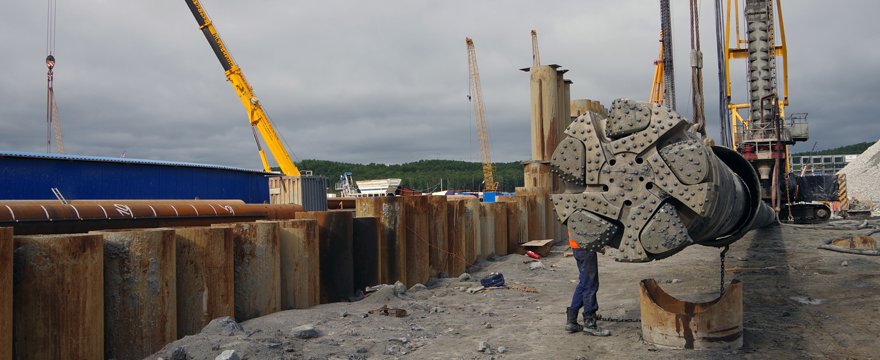Gigantic dry dock rising on the Kola Bay
In the coming years, the use of liquified natural gas (LNG) in transport and industry is expected to grow significantly. That is a key reason why earlier this year, a Robit Steel Fist pilot bit started to penetrate granite rock in the Kola peninsula.
As far as fossil fuels go, LNG is by far the most environmentally friendly – it has the lowest CO2 emissions per unit of energy while also having the highest heating value. Thus, it has big potential as a future transport fuel alongside biofuels, hydrogen and electric mobility, and most major fossil fuel companies have begun investing in it.
Treasure hidden beneath the permafrost
Russia has the largest natural gas reserves in the world. The bulk of those reserves is sitting under the permafrost in northwest Siberia, in the Yamal Peninsula and its offshore areas. Recent years in the region have seen a massive investment in the so-called Yamal project, a joint venture between Russian, French and Chinese companies, which includes a huge LNG plant, in operation since 2017.
The Yamal project is now being followed by the Arctic LNG-2, another major international joint venture, located in the neighbouring Gyda peninsula. It has an ambitious plan to cut the production costs by placing the LNG production plants offshore in the Gulf of Ob on so-called gravitybased structures (GBS). These reinforced concrete structures are built on a shipyard, towed to the intended location, and then sunk onto the seabed.
Arctic village transformed
Until recently, Belokamenka was a small village just north of Murmansk in the northwest corner of Russia. In 2017 it was chosen as the location for the new shipyard where the GBSs are to be built. This means a massive transformation in the area, covering more than 150 hectares. The shipyard will have two dry docks, each 400 x 175 m, the largest in Russia. Currently the construction site employs some 4,000 people.
The construction of pipe pile walls for the dry docks is performed by NK-Teplokhimmontazh and the drilling contractor Spetsfundament Plus. It involves the drilling of no less than a thousand piles, up to 32 metres deep, through sand and loam into the granite bedrock. Their tool of choice for this Down-the-Hole job is the large diameter Robit Steel Fist Casing System. Drilling work on dry dock #1 is now completed and will continue into 2020 on dry dock #2.
In 2022, the first GBS built in Belokamenka is expected to start its 1,600 km voyage, with the help of a powerful tugboat fleet, across the Barents Sea to its destination in the Gulf of Ob.
